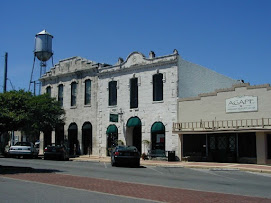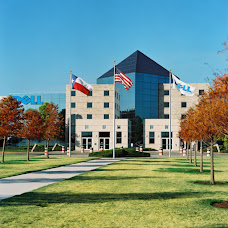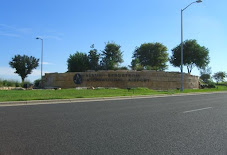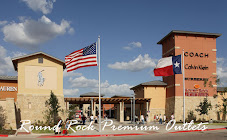No, prayer doesn't change things ? Yes I am sure it changes things
The only thing prayer changes is the pray-ers perception of the outcome of what he is praying about. It makes the person who prays believe that everything is now out of his hands, and that he is being watched over (faith) . All it does really does is comfort a person in need.
Example: A man prays in earnest for the deadly illness befalling his wife to go away. The wife dies, despite his prayers.
"Don't worry, my Son. It's all in God's plan." The prayer takes no heat from its' failure.
A man prays in earnest for the deadly illness befalling his wife to go away. It does, (even though the prayer did nothing for the illness)."God is watching over his children, my Son.
Prayer changes things." The prayer is seen as a great and powerful tool for the believer.
Example: "My father had cancer. I prayed to God to let him live. The cancer went away. Therefore, my prayer worked."
"The Soviet Union collapsed after instituting state atheism. Therefore, we must avoid state atheism for the same reasons." )
If I wake up in the morning, and outside the sun rises, it doesn't mean that the sun rose because I woke up.
Prayer is very important as a mean to communicate with God and to express your feeling and your burdens to God and try to listen to God's voices as you start to pray and meditate.
Tuesday, March 25, 2008
Something About Patience
To be a river and not a rock.
To allow the problems to flow around you and not try to stop the problems with force.
To bend when the wind blows the hardest.
To hold your tongue when it would seem so obvious that a scream will do the most good.
To try and teach instead of argue.
To say something nice to a person when you know in your heart that they hate you.
To be kind and gentle when you know in your heart that it will likely do no good.
To smile in the gift of the little things.
To take comfort in the smallest of words.
To cherish the moment.
To love someone you will never meet.
To allow the problems to flow around you and not try to stop the problems with force.
To bend when the wind blows the hardest.
To hold your tongue when it would seem so obvious that a scream will do the most good.
To try and teach instead of argue.
To say something nice to a person when you know in your heart that they hate you.
To be kind and gentle when you know in your heart that it will likely do no good.
To smile in the gift of the little things.
To take comfort in the smallest of words.
To cherish the moment.
To love someone you will never meet.
F5 - 3DNS Solutions
The 3DNS Controller is a F5 Networks product intended to perform wide-area load balacing and high availability of Internet applications and services. It is able to manage traffic for large sites across multiple data centers, and ensure that users are connected to the data center nearest them. It does this by selectively handing out a particular IP address in response to a DNS name record request.
The 3DNS Model
The best way to understand what the 3DNS controller does, and how it does it, is to imagine it in action. Let us say that you are a large corporation with a website -- call it buystuffonline.com -- that gets a lot of traffic from all over the world. Your corporation depends on people being able to make purchases via its website for its revenue -- so if that site goes down, or is even merely slow, you're losing money. A lot of money. So you build datacenters -- facilities where a copy of your website is hosted -- in several major cities around the world: Tokyo, LA, New York, and London, in hopes that one of these datacenters will be at least on the same continent as any given customer.
Then you need a way of making sure that even though all of your customers are going to the same domain name, they will always be routed to a datacenter that is functioning, and preferably one that is both geographically close to them and responding quickly. It helps if the load is fairly evenly distributed among datacenters as well.
This is where 3DNS comes in. You give 3DNS a list of the IP addresses of your website hosts, and state which datacenter that host is located in. You associate all of these hosts IPs with a single DNS record -- say, www.buystuffonline.com. Then, whenever your customer opens up a browser and points it at www.buystuffonline.com, a name record lookup is performed, and your 3DNS hands out the IP address of one of the hosts in the list associated with that FQDN.
You can instruct 3DNS to spread the load evenly among all datacenters, or to send a given percentage of requests to a particular datacenter depending on its ability to serve traffic. 3DNS can even do fancy things like dynamically determine which datacenter is performing the best and hand out that IP address more often than others.
Features
The 3DNS Model
The best way to understand what the 3DNS controller does, and how it does it, is to imagine it in action. Let us say that you are a large corporation with a website -- call it buystuffonline.com -- that gets a lot of traffic from all over the world. Your corporation depends on people being able to make purchases via its website for its revenue -- so if that site goes down, or is even merely slow, you're losing money. A lot of money. So you build datacenters -- facilities where a copy of your website is hosted -- in several major cities around the world: Tokyo, LA, New York, and London, in hopes that one of these datacenters will be at least on the same continent as any given customer.
Then you need a way of making sure that even though all of your customers are going to the same domain name, they will always be routed to a datacenter that is functioning, and preferably one that is both geographically close to them and responding quickly. It helps if the load is fairly evenly distributed among datacenters as well.
This is where 3DNS comes in. You give 3DNS a list of the IP addresses of your website hosts, and state which datacenter that host is located in. You associate all of these hosts IPs with a single DNS record -- say, www.buystuffonline.com. Then, whenever your customer opens up a browser and points it at www.buystuffonline.com, a name record lookup is performed, and your 3DNS hands out the IP address of one of the hosts in the list associated with that FQDN.
You can instruct 3DNS to spread the load evenly among all datacenters, or to send a given percentage of requests to a particular datacenter depending on its ability to serve traffic. 3DNS can even do fancy things like dynamically determine which datacenter is performing the best and hand out that IP address more often than others.
Features
- High Availability
- Geographic Load Balancing
- Integration with Other F5 Products
BigIP - F5
BIG-IP is the only device in the industry that can do everything. It delivers high availability, improved performance, application security, and access control, all in one unit.
A single BIG-IP device can do the work of a dozen single-purpose products. More importantly, it can do that work in an efficient, cohesive manner that is easier to manage and adapt as business and technology needs change.
The BIG-IP Product Family is also extraordinarily flexible and configurable. You choose which functions you want by selecting various BIG-IP product modules and BIG-IP feature modules. Depending on which modules and how much traffic capacity you need, you can choose from various BIG-IP hardware platforms.
BIG-IP Product Modules
F5 application delivery products are modular, designed with expansion and customization in mind. BIG-IP product modules let you easily incorporate new functionality -- everything from Web acceleration to topology-based load balancing -- so you can quickly adapt to changing application and business challenges.
BIG-IP Feature Modules
Need even more functionality in your network? BIG-IP feature modules provide a more cost-effective and easier-to-manage solution than adding single-function point products.
BIG-IP Hardware
Its ground-breaking platforms deliver unmatched power, dramatically improving Layer 4-7 traffic throughput and providing better application delivery. F5's revolutionary TMOS architecture is at the heart of all BIG-IP platforms, efficiently isolating clients from the server-side flows to increase application performance and allow custom payload inspection and transformation capabilities with iRules.
The powerful VIPRION hardware delivers high performance and scalability for BIG-IP LTM. VIPRION is the first application delivery controller that scales on demand, and it provides the highest levels of throughput and transactions per second of any product on the market.
THIS IS F5 not F1
A single BIG-IP device can do the work of a dozen single-purpose products. More importantly, it can do that work in an efficient, cohesive manner that is easier to manage and adapt as business and technology needs change.
The BIG-IP Product Family is also extraordinarily flexible and configurable. You choose which functions you want by selecting various BIG-IP product modules and BIG-IP feature modules. Depending on which modules and how much traffic capacity you need, you can choose from various BIG-IP hardware platforms.
BIG-IP Product Modules
F5 application delivery products are modular, designed with expansion and customization in mind. BIG-IP product modules let you easily incorporate new functionality -- everything from Web acceleration to topology-based load balancing -- so you can quickly adapt to changing application and business challenges.
- Local Traffic Manager (LTM)
- Global Traffic Manager (GTM)
- Link Controller (LC)
- Application Security Manager (ASM)
- WebAccelerator (WA)
BIG-IP Feature Modules
Need even more functionality in your network? BIG-IP feature modules provide a more cost-effective and easier-to-manage solution than adding single-function point products.
BIG-IP Hardware
Its ground-breaking platforms deliver unmatched power, dramatically improving Layer 4-7 traffic throughput and providing better application delivery. F5's revolutionary TMOS architecture is at the heart of all BIG-IP platforms, efficiently isolating clients from the server-side flows to increase application performance and allow custom payload inspection and transformation capabilities with iRules.
The powerful VIPRION hardware delivers high performance and scalability for BIG-IP LTM. VIPRION is the first application delivery controller that scales on demand, and it provides the highest levels of throughput and transactions per second of any product on the market.
THIS IS F5 not F1
Monday, March 24, 2008
Frustrated again...
As a football fan i was quite disappointed with the match result last nite, during the match live telecast it was strong wind, heavy rain and rolling thunderstorm could not watch the game but i was quite down due to astro transmissioon was distrupted due to this bad weather. I knew something went wrong the reds player
was sent off (JM) and they were down with 10 men. Being led 1-0 by MU during first half is not an easy task for the reds. OMG, Man U always on the best side and very lucky when
they have a head to head meet with Liverpool. Looking at the final score in Internet it was 3-0; Too bad, i just do not believe it as Liverpool will always fight back until the end in any match. Hoping for the CL now.
The race for the EP league is now completely gone, fourth place should be good enuff this season huh. I wish Chelsea or Arsenal can turn the table around at MU next week. Liverpool will hosts Everton next week not a bad game i guess.
was sent off (JM) and they were down with 10 men. Being led 1-0 by MU during first half is not an easy task for the reds. OMG, Man U always on the best side and very lucky when
they have a head to head meet with Liverpool. Looking at the final score in Internet it was 3-0; Too bad, i just do not believe it as Liverpool will always fight back until the end in any match. Hoping for the CL now.
The race for the EP league is now completely gone, fourth place should be good enuff this season huh. I wish Chelsea or Arsenal can turn the table around at MU next week. Liverpool will hosts Everton next week not a bad game i guess.
Wednesday, March 19, 2008
Dear GOD
this is real hard for me
gotta walk away and be free
it takes longer to get outta the new heights
i aimed to touch the sky
two things real worries me in life
but You always there to lean me Your hands
i am touched by your words and
Your grace is too precious for me
i thought You never follow me to isolated places
but when i call out for You
You answered me
sometime i just don't want to carry on
but You keep encourage me
when i am too tired
You give me good rest
when no one refused to talk to me
You whisper softly to my ears
when i am sad
You always comfort me
You are always there for me and You will always be.
gotta walk away and be free
it takes longer to get outta the new heights
i aimed to touch the sky
two things real worries me in life
but You always there to lean me Your hands
i am touched by your words and
Your grace is too precious for me
i thought You never follow me to isolated places
but when i call out for You
You answered me
sometime i just don't want to carry on
but You keep encourage me
when i am too tired
You give me good rest
when no one refused to talk to me
You whisper softly to my ears
when i am sad
You always comfort me
You are always there for me and You will always be.
The big boys clash
Liverpool have put together an impressive winning run since their FA Cup upset at home to Barnsley, and go into Sunday's epic encounter with new Premier League leaders Manchester United with confidence high.On the same day, Arsenal visit Chelsea and the results of the two matches could have a huge influence on the eventual destination of the title.
On the same day, Arsenal visit Chelsea and the results of the two matches could have a huge influence on the eventual destination of the title. This is something that i would love to see and witness on my own, hopefully my dream comes true...pls God help the Reds. The reds beats man U at old trafford....this is awesome.
On the same day, Arsenal visit Chelsea and the results of the two matches could have a huge influence on the eventual destination of the title. This is something that i would love to see and witness on my own, hopefully my dream comes true...pls God help the Reds. The reds beats man U at old trafford....this is awesome.
Tuesday, March 18, 2008
Cabinet Ministers 2008
PUTRAJAYA: Datuk Seri Abdullah Ahmad Badawi unveiled a new smaller Cabinet, dropped senior ministers and brought in 50% new faces yesterday, with 16 of the 32 ministers being newcomers. And in a surprise move, he also did away with parliamentary secretaries.
Perdana Menteri : Datuk Seri Abdullah Ahmad Badawi
Timbalan Perdana Menteri: Datuk Seri Najib Razak
JABATAN PERDANA MENTERI
Menteri : Tan Sri Bernard Dompok
Menteri : Datuk Seri Mohamed Nazri Abdul Aziz
Menteri : Datuk Ahmad Zahid Hamidi
Menteri : Datuk Zaid Ibrahim (senator)
Menteri : Datuk Amirsham A Aziz (senator)
Timbalan : Datuk Johari Baharum
Timbalan : Datuk Dr Mashitah Ibrahim (senator)
Timbalan : S K Devamany
Timbalan : Datuk Hasan Malek
KEMENTERIAN DALAM NEGERI
Menteri : Datuk Seri Syed Hamid Albar
Timbalan : Datuk Chor Chee Heung
Timbalan : Datuk Wan Ahmad Farid Wan Salleh (senator)
KEMENTERIAN KEWANGAN
Menteri : Datuk Seri Abdullah Ahmad Badawi
Menteri II : Tan Sri Nor Mohamed Yakcop
Timbalan : Datuk Ahmad Husni Mohamad Hanadzlah
Timbalan : Datuk Kong Cho Ha
KEMENTERIAN PENGANGKUTAN
Menteri : Datuk Ong Tee Keat
Timbalan : Datuk Anifah Aman
KEMENTERIAN KERJA RAYA
Menteri : Datuk Ir. Mohd Zin Mohamed
Timbalan : Datuk Yong Khoon Seng
KEMENTERIAN PERUSAHAAN PERLADANGAN DAN KOMODITI
Menteri : Datuk Peter Chin Fah Kui
Timbalan : A Kohilan Pillay (senator)
KEMENTERIAN TENAGA, AIR DAN KOMUNIKASI
Menteri : Datuk Shaziman Abu Mansor
Timbalan : Datuk Joseph Salang Gandum
KEMENTERIAN PERDAGANGAN ANTARABANGSA DAN INDUSTRI
Menteri : Tan Sri Muhyiddin Yassin
Timbalan : Datuk Liew Vui Keong
Timbalan : Datuk Jacob Dungau Sagan ** The first Kenyah Minister
(Deputy International Trade and Industry Minister II
Name: Datuk Jacob Dungau Sagan (Baram MP)Age: 61
SPDP vice-president and Miri Port Authority chairman )
KEMENTERIAN PERTANIAN DAN INDUSTRI ASAS TANI
Menteri : Datuk Mustapa Mohamed
Timbalan : Datuk Rohani Abdul Karim
KEMENTERIAN PERDAGANGAN DALAM NEGERI DAN HAL EHWAL PENGGUNA
Menteri : Datuk Shahrir Abdul Samad
Timbalan : Jelaing anak Mersat
KEMENTERIAN PELAJARAN
Menteri : Datuk Hishammuddin Hussein
Timbalan : Datuk Dr Wee Ka Siong
Timbalan : Datuk Razali Ismail
KEMENTERIAN PENERANGAN
Menteri : Datuk Ahmad Shabery Cheek
Timbalan : Datuk Tan Lian Hoe
KEMENTERIAN PERPADUAN, KEBUDAYAAN, KESENIAN DAN WARISAN
Menteri : Datuk Mohd Shafie Apdal
Timbalan : Teng Boon Soon
KEMENTERIAN SUMBER MANUSIA
Menteri : Datuk Dr S Subramaniam
Timbalan : Datuk Noraini Ahmad
KEMENTERIAN SAINS TEKNOLOGI DAN INOVASI
Menteri : Datuk Dr Maximus Ongkili
Timbalan : Fadillah Yusof
KEMENTERIAN PERUMAHAN DAN KERAJAAN TEMPATAN
Menteri : Datuk Ong Ka Chuan
Timbalan : Datuk Robert Lau Hoi Chew
Timbalan : Datuk Hamzah Zainudin
KEMENTERIAN PERTAHANAN
Menteri : Datuk Seri Najib Razak
Timbalan : Datuk Wira Abu Seman Yusop
KEMENTERIAN KEMAJUAN LUAR BANDAR DAN WILAYAH
Menteri : Tan Sri Muhammad Muhd Taib
Timbalan : Tan Sri Joseph Kurup
Timbalan : Joseph Entulu Belaun
KEMENTERIAN LUAR NEGERI
Menteri : Datuk Seri Dr Rais Yatim
Timbalan : Datuk Seri Tengku Azlan Abu Bakar
KEMENTERIAN BELIA DAN SUKAN
Menteri : Datuk Ismail Sabri Yaakob
Timbalan : Wee Jeck Seng
KEMENTERIAN KESIHATAN
Menteri : Datuk Liow Tiong Lai
Timbalan : Datuk Dr. Abdul Latiff Ahmad
KEMENTERIAN PEMBANGUNAN USAHAWAN DAN KOPERASI
Menteri : Datuk Noh Omar
Timbalan : Datuk Saifuddin Abdullah
KEMENTERIAN PEMBANGUNAN WANITA,KELUARGA DANMASYARAKAT
Menteri : Datuk Dr Ng Yen Yen
Timbalan : Noriah Kasnon
KEMENTERIAN PELANCONGAN
Menteri : Datuk Seri Azalina Othman Said
Timbalan Menteri : Datuk Seri Sulaiman Abdul Rahman Abdul Taib (anak Pehin)
KEMENTERIAN WILAYAH PERSEKUTUAN
Menteri : Datuk Zulhasnan Rafique
Timbalan Menteri : Datuk M Saravanan
KEMENTERIAN PENGAJIAN TINGGI
Menteri : Datuk Seri Khaled Nordin
Timbalan Menteri : Datuk Dr Hou Kok Chung
Timbalan Menteri : Datuk Idris Haron
KEMENTERIAN SUMBER ASLI DAN ALAM SEKITAR
Menteri : Datuk Douglas Uggah Embas
Timbalan Menteri : Datuk Seri Abdul Ghapur Salleh
Hopefully they will be able to implement their responsibilities and accountibility more effectively.
Perdana Menteri : Datuk Seri Abdullah Ahmad Badawi
Timbalan Perdana Menteri: Datuk Seri Najib Razak
JABATAN PERDANA MENTERI
Menteri : Tan Sri Bernard Dompok
Menteri : Datuk Seri Mohamed Nazri Abdul Aziz
Menteri : Datuk Ahmad Zahid Hamidi
Menteri : Datuk Zaid Ibrahim (senator)
Menteri : Datuk Amirsham A Aziz (senator)
Timbalan : Datuk Johari Baharum
Timbalan : Datuk Dr Mashitah Ibrahim (senator)
Timbalan : S K Devamany
Timbalan : Datuk Hasan Malek
KEMENTERIAN DALAM NEGERI
Menteri : Datuk Seri Syed Hamid Albar
Timbalan : Datuk Chor Chee Heung
Timbalan : Datuk Wan Ahmad Farid Wan Salleh (senator)
KEMENTERIAN KEWANGAN
Menteri : Datuk Seri Abdullah Ahmad Badawi
Menteri II : Tan Sri Nor Mohamed Yakcop
Timbalan : Datuk Ahmad Husni Mohamad Hanadzlah
Timbalan : Datuk Kong Cho Ha
KEMENTERIAN PENGANGKUTAN
Menteri : Datuk Ong Tee Keat
Timbalan : Datuk Anifah Aman
KEMENTERIAN KERJA RAYA
Menteri : Datuk Ir. Mohd Zin Mohamed
Timbalan : Datuk Yong Khoon Seng
KEMENTERIAN PERUSAHAAN PERLADANGAN DAN KOMODITI
Menteri : Datuk Peter Chin Fah Kui
Timbalan : A Kohilan Pillay (senator)
KEMENTERIAN TENAGA, AIR DAN KOMUNIKASI
Menteri : Datuk Shaziman Abu Mansor
Timbalan : Datuk Joseph Salang Gandum
KEMENTERIAN PERDAGANGAN ANTARABANGSA DAN INDUSTRI
Menteri : Tan Sri Muhyiddin Yassin
Timbalan : Datuk Liew Vui Keong
Timbalan : Datuk Jacob Dungau Sagan ** The first Kenyah Minister
(Deputy International Trade and Industry Minister II
Name: Datuk Jacob Dungau Sagan (Baram MP)Age: 61
SPDP vice-president and Miri Port Authority chairman )
KEMENTERIAN PERTANIAN DAN INDUSTRI ASAS TANI
Menteri : Datuk Mustapa Mohamed
Timbalan : Datuk Rohani Abdul Karim
KEMENTERIAN PERDAGANGAN DALAM NEGERI DAN HAL EHWAL PENGGUNA
Menteri : Datuk Shahrir Abdul Samad
Timbalan : Jelaing anak Mersat
KEMENTERIAN PELAJARAN
Menteri : Datuk Hishammuddin Hussein
Timbalan : Datuk Dr Wee Ka Siong
Timbalan : Datuk Razali Ismail
KEMENTERIAN PENERANGAN
Menteri : Datuk Ahmad Shabery Cheek
Timbalan : Datuk Tan Lian Hoe
KEMENTERIAN PERPADUAN, KEBUDAYAAN, KESENIAN DAN WARISAN
Menteri : Datuk Mohd Shafie Apdal
Timbalan : Teng Boon Soon
KEMENTERIAN SUMBER MANUSIA
Menteri : Datuk Dr S Subramaniam
Timbalan : Datuk Noraini Ahmad
KEMENTERIAN SAINS TEKNOLOGI DAN INOVASI
Menteri : Datuk Dr Maximus Ongkili
Timbalan : Fadillah Yusof
KEMENTERIAN PERUMAHAN DAN KERAJAAN TEMPATAN
Menteri : Datuk Ong Ka Chuan
Timbalan : Datuk Robert Lau Hoi Chew
Timbalan : Datuk Hamzah Zainudin
KEMENTERIAN PERTAHANAN
Menteri : Datuk Seri Najib Razak
Timbalan : Datuk Wira Abu Seman Yusop
KEMENTERIAN KEMAJUAN LUAR BANDAR DAN WILAYAH
Menteri : Tan Sri Muhammad Muhd Taib
Timbalan : Tan Sri Joseph Kurup
Timbalan : Joseph Entulu Belaun
KEMENTERIAN LUAR NEGERI
Menteri : Datuk Seri Dr Rais Yatim
Timbalan : Datuk Seri Tengku Azlan Abu Bakar
KEMENTERIAN BELIA DAN SUKAN
Menteri : Datuk Ismail Sabri Yaakob
Timbalan : Wee Jeck Seng
KEMENTERIAN KESIHATAN
Menteri : Datuk Liow Tiong Lai
Timbalan : Datuk Dr. Abdul Latiff Ahmad
KEMENTERIAN PEMBANGUNAN USAHAWAN DAN KOPERASI
Menteri : Datuk Noh Omar
Timbalan : Datuk Saifuddin Abdullah
KEMENTERIAN PEMBANGUNAN WANITA,KELUARGA DANMASYARAKAT
Menteri : Datuk Dr Ng Yen Yen
Timbalan : Noriah Kasnon
KEMENTERIAN PELANCONGAN
Menteri : Datuk Seri Azalina Othman Said
Timbalan Menteri : Datuk Seri Sulaiman Abdul Rahman Abdul Taib (anak Pehin)
KEMENTERIAN WILAYAH PERSEKUTUAN
Menteri : Datuk Zulhasnan Rafique
Timbalan Menteri : Datuk M Saravanan
KEMENTERIAN PENGAJIAN TINGGI
Menteri : Datuk Seri Khaled Nordin
Timbalan Menteri : Datuk Dr Hou Kok Chung
Timbalan Menteri : Datuk Idris Haron
KEMENTERIAN SUMBER ASLI DAN ALAM SEKITAR
Menteri : Datuk Douglas Uggah Embas
Timbalan Menteri : Datuk Seri Abdul Ghapur Salleh
Hopefully they will be able to implement their responsibilities and accountibility more effectively.
IP address and subnetwork
An IP address (Internet Protocol address) is a unique address that certain electronic devices use in order to identify and communicate with each other on a computer network utilizing the Internet Protocol standard (IP)—in simpler terms, a computer address.
IP addresses are managed and created by the Internet Assigned Numbers Authority (IANA). The IANA generally allocates super-blocks to Regional Internet Registries, who in turn allocate smaller blocks to Internet service providers and enterprises.
IPv4
The Internet Protocol (IP) has two versions currently in use (see IP version history for details).
IPv4 only uses 32-bit (4-byte) addresses, which limits the address space to 4,294,967,296 (232) possible unique addresses. However, many are reserved for special purposes, such as private networks (~18 million addresses) or multicast addresses (~270 million addresses). This reduces the number of addresses that can be allocated as public Internet addresses, and as the number of addresses available is consumed, an IPv4 address shortage appears to be inevitable in the long run. This limitation has helped stimulate the push towards IPv6, which is currently in the early stages of deployment and is currently the only contender to replace IPv4.
IPv4 addresses are usually represented in dotted-decimal notation (four numbers, each ranging from 0 to 255, separated by dots, e.g. 147.132.42.18). Each range from 0 to 255 can be represented by 8 bits, and is therefore called an octet. It is possible, although less common, to write IPv4 addresses in binary or hexadecimal. When converting, each octet is treated as a separate number. (So 255.255.0.0 in dot-decimal would be FF.FF.00.00 in hexadecimal.)
Subnetwork
Currently, three classes of networks are commonly used. These classes may be segregated by the number of octets used to identify a single network, and also by the range of numbers used by the first octet.
Class A networks (the largest) are identified by the first octet, which ranges from 1 to 126.
Class B networks are identified by the first two octets, the first of which ranges from 128 to 191.
Class C networks (the smallest) are identified by the first three octets, the first of which ranges from 192 to 223.
IP addresses are managed and created by the Internet Assigned Numbers Authority (IANA). The IANA generally allocates super-blocks to Regional Internet Registries, who in turn allocate smaller blocks to Internet service providers and enterprises.
IPv4
The Internet Protocol (IP) has two versions currently in use (see IP version history for details).
IPv4 only uses 32-bit (4-byte) addresses, which limits the address space to 4,294,967,296 (232) possible unique addresses. However, many are reserved for special purposes, such as private networks (~18 million addresses) or multicast addresses (~270 million addresses). This reduces the number of addresses that can be allocated as public Internet addresses, and as the number of addresses available is consumed, an IPv4 address shortage appears to be inevitable in the long run. This limitation has helped stimulate the push towards IPv6, which is currently in the early stages of deployment and is currently the only contender to replace IPv4.
IPv4 addresses are usually represented in dotted-decimal notation (four numbers, each ranging from 0 to 255, separated by dots, e.g. 147.132.42.18). Each range from 0 to 255 can be represented by 8 bits, and is therefore called an octet. It is possible, although less common, to write IPv4 addresses in binary or hexadecimal. When converting, each octet is treated as a separate number. (So 255.255.0.0 in dot-decimal would be FF.FF.00.00 in hexadecimal.)
Subnetwork
Currently, three classes of networks are commonly used. These classes may be segregated by the number of octets used to identify a single network, and also by the range of numbers used by the first octet.
Class A networks (the largest) are identified by the first octet, which ranges from 1 to 126.
Class B networks are identified by the first two octets, the first of which ranges from 128 to 191.
Class C networks (the smallest) are identified by the first three octets, the first of which ranges from 192 to 223.
Network routing protocols
Routing is the process of selecting paths in computer networking along which to send data or physical traffic. Routing is performed for many kinds of networks, including the telephone network, the Internet, and transport networks.
Routing directs forwarding, the passing of logically addressed packets from their source toward their ultimate destination through intermediary nodes; typically hardware devices called routers, bridges, gateways, firewalls, or switches. Ordinary computers with multiple network cards can also forward packets and perform routing, though with more limited performance. The routing process usually directs forwarding on the basis of routing tables which maintain a record of the routes to various network destinations. Thus constructing routing tables, which are held in the routers' memory, becomes very important for efficient routing.
Routers create broadcast domains. A network broadcast is a message that is sent to all hosts on a network. The reason for a broadcast is for a host on a network to retrieve information about an unknown host. Broadcasts can be necessary and useful tools for protocols on networks to enable data communication. The larger the number of hosts on a network, the more of a problem broadcasts become. More hosts equals more broadcasts equals more consumed bandwidth on the network. When these broadcasts are sent, the host that receive the broadcasts need to process them, and this processing takes away valuable time from performing other important network functions. Broadcasts are contained within networks by the Router, these networks are know as Broadcast Domains.
Routing, in a more narrow sense of the term, is often contrasted with bridging in its assumption that network addresses are structured and that similar addresses imply proximity within the network. Because structured addresses allow a single routing table entry to represent the route to a group of devices, structured addressing (routing, in the narrow sense) outperforms unstructured addressing (bridging) in large networks, and has become the dominant form of addressing on the Internet, though bridging is still widely used, albeit within localized environments.
Distance-vector routing protocol (are simple and efficient in small networks - EIGRP)
Distance vector algorithms use the Bellman-Ford algorithm. This approach assigns a number, the cost, to each of the links between each node in the network. Nodes will send information from point A to point B via the path that results in the lowest total cost (i.e. the sum of the costs of the links between the nodes used).
The algorithm operates in a very simple manner. When a node first starts, it only knows of its immediate neighbours, and the direct cost involved in reaching them. (This information, the list of destinations, the total cost to each, and the next hop to send data to get there, makes up the routing table, or distance table.) Each node, on a regular basis, sends to each neighbour its own current idea of the total cost to get to all the destinations it knows of. The neighbouring node(s) examine this information, and compare it to what they already 'know'; anything which represents an improvement on what they already have, they insert in their own routing table(s). Over time, all the nodes in the network will discover the best next hop for all destinations, and the best total cost.
When one of the nodes involved goes down, those nodes which used it as their next hop for certain destinations discard those entries, and create new routing-table information. They then pass this information to all adjacent nodes, which then repeat the process. Eventually all the nodes in the network receive the updated information, and will then discover new paths to all the destinations which they can still "reach".
Link-state routing protocol (OSPF, IS-IS)
When applying link-state algorithms, each node uses as its fundamental data a map of the network in the form of a graph. To produce this, each node floods the entire network with information about what other nodes it can connect to, and each node then independently assembles this information into a map. Using this map, each router then independently determines the least-cost path from itself to every other node using a standard shortest paths algorithm such as Dijkstra's algorithm. The result is a tree rooted at the current node such that the path through the tree from the root to any other node is the least-cost path to that node. This tree then serves to construct the routing table, which specifies the best next hop to get from the current node to any other node.
Path selection
A routing metric is a value used by a routing algorithm to determine whether one route should perform better than another. Metrics can cover such information as bandwidth, delay, hop count, path cost, load, MTU, reliability, and communication cost (see e.g. this survey for a list of proposed routing metrics). The routing table stores only the best possible routes, while link-state or topological databases may store all other information as well.
As a routing metric is specific to a given routing protocol, multi-protocol routers must use some external heuristic in order to select between routes learned from different routing protocols. Cisco's routers, for example, attribute a value known as the administrative distance to each route, where smaller administrative distances indicate routes learned from a supposedly more reliable protocol.
A local network administrator, in special cases, can setup host-specific routes to a particular machine which provides more control over network usage, permits testing and better overall security. This can come in handy when required to debug network connections or routing tables.
Routing directs forwarding, the passing of logically addressed packets from their source toward their ultimate destination through intermediary nodes; typically hardware devices called routers, bridges, gateways, firewalls, or switches. Ordinary computers with multiple network cards can also forward packets and perform routing, though with more limited performance. The routing process usually directs forwarding on the basis of routing tables which maintain a record of the routes to various network destinations. Thus constructing routing tables, which are held in the routers' memory, becomes very important for efficient routing.
Routers create broadcast domains. A network broadcast is a message that is sent to all hosts on a network. The reason for a broadcast is for a host on a network to retrieve information about an unknown host. Broadcasts can be necessary and useful tools for protocols on networks to enable data communication. The larger the number of hosts on a network, the more of a problem broadcasts become. More hosts equals more broadcasts equals more consumed bandwidth on the network. When these broadcasts are sent, the host that receive the broadcasts need to process them, and this processing takes away valuable time from performing other important network functions. Broadcasts are contained within networks by the Router, these networks are know as Broadcast Domains.
Routing, in a more narrow sense of the term, is often contrasted with bridging in its assumption that network addresses are structured and that similar addresses imply proximity within the network. Because structured addresses allow a single routing table entry to represent the route to a group of devices, structured addressing (routing, in the narrow sense) outperforms unstructured addressing (bridging) in large networks, and has become the dominant form of addressing on the Internet, though bridging is still widely used, albeit within localized environments.
Distance-vector routing protocol (are simple and efficient in small networks - EIGRP)
Distance vector algorithms use the Bellman-Ford algorithm. This approach assigns a number, the cost, to each of the links between each node in the network. Nodes will send information from point A to point B via the path that results in the lowest total cost (i.e. the sum of the costs of the links between the nodes used).
The algorithm operates in a very simple manner. When a node first starts, it only knows of its immediate neighbours, and the direct cost involved in reaching them. (This information, the list of destinations, the total cost to each, and the next hop to send data to get there, makes up the routing table, or distance table.) Each node, on a regular basis, sends to each neighbour its own current idea of the total cost to get to all the destinations it knows of. The neighbouring node(s) examine this information, and compare it to what they already 'know'; anything which represents an improvement on what they already have, they insert in their own routing table(s). Over time, all the nodes in the network will discover the best next hop for all destinations, and the best total cost.
When one of the nodes involved goes down, those nodes which used it as their next hop for certain destinations discard those entries, and create new routing-table information. They then pass this information to all adjacent nodes, which then repeat the process. Eventually all the nodes in the network receive the updated information, and will then discover new paths to all the destinations which they can still "reach".
Link-state routing protocol (OSPF, IS-IS)
When applying link-state algorithms, each node uses as its fundamental data a map of the network in the form of a graph. To produce this, each node floods the entire network with information about what other nodes it can connect to, and each node then independently assembles this information into a map. Using this map, each router then independently determines the least-cost path from itself to every other node using a standard shortest paths algorithm such as Dijkstra's algorithm. The result is a tree rooted at the current node such that the path through the tree from the root to any other node is the least-cost path to that node. This tree then serves to construct the routing table, which specifies the best next hop to get from the current node to any other node.
Path selection
A routing metric is a value used by a routing algorithm to determine whether one route should perform better than another. Metrics can cover such information as bandwidth, delay, hop count, path cost, load, MTU, reliability, and communication cost (see e.g. this survey for a list of proposed routing metrics). The routing table stores only the best possible routes, while link-state or topological databases may store all other information as well.
As a routing metric is specific to a given routing protocol, multi-protocol routers must use some external heuristic in order to select between routes learned from different routing protocols. Cisco's routers, for example, attribute a value known as the administrative distance to each route, where smaller administrative distances indicate routes learned from a supposedly more reliable protocol.
A local network administrator, in special cases, can setup host-specific routes to a particular machine which provides more control over network usage, permits testing and better overall security. This can come in handy when required to debug network connections or routing tables.
Wednesday, March 5, 2008
Who God Uses
God, grant me the Serenity to accept the people I cannot change, the Courage to change the one I can, and the Wisdom to know it's me.
The next time you feel like GOD can't use you, just remember......
Noah was a drunk
Abraham was too old
Isaac was a daydreamer
Jacob was a liar
Leah was ugly
Joseph was abused
Moses had a stuttering problem
Gideon was afraid
Samson had long hair and was a womanizer
Rahab was a prostitute
Jeremiah and Timothy were too young
David had an affair and was a murderer
Elijah was suicidal (with nothing to live for - desperate)
Isaiah preached naked
Jonah ran from God
Naomi was a widow
Job went bankrupt
John the Baptist ate bugs
Peter denied Christ
The Disciples fell asleep while praying
Martha worried about everything
The Samaritan woman was divorced, more than once
Zaccheus was too small
Paul was too religious
Timothy had an ulcer and
Lazarus was dead!
AND no more excuses for us now.
God can use you to your full potential.
Besides, you aren't the message, you are just the messenger.
1. God wants spiritual fruit, not religious nuts.
2. Dear God, I have a problem, it's me.
3. Growing old is inevitable or expected. Growing up is an optional.
4. There is no key to happiness. The door is always open.
5. Silence is often misinterpreted but never misquoted.
6. Do the math. Count your blessings.
7. Faith is the ability to not panic.
8. Laugh every day, it's like inner jogging.
9. If you worry, you didn't pray. If you pray, don't worry.
10. As a child of God, prayer is kind of like calling home everyday.
11. Blessed are the flexible for they shall not be bent out of shape.
12. The most important things in your house are the people.
13. When we get tangled up in our problems, be still. God wants us to be still so He can untangle the knot.
14. A grudge is a heavy thing to carry.
15. He who dies with the most toys is still dead.
If you read my blog here please do not hesitate to share this with a friend. In the Circle of God's love, God is waiting to use your full potential.
May God Always Bless You !
The next time you feel like GOD can't use you, just remember......
Noah was a drunk
Abraham was too old
Isaac was a daydreamer
Jacob was a liar
Leah was ugly
Joseph was abused
Moses had a stuttering problem
Gideon was afraid
Samson had long hair and was a womanizer
Rahab was a prostitute
Jeremiah and Timothy were too young
David had an affair and was a murderer
Elijah was suicidal (with nothing to live for - desperate)
Isaiah preached naked
Jonah ran from God
Naomi was a widow
Job went bankrupt
John the Baptist ate bugs
Peter denied Christ
The Disciples fell asleep while praying
Martha worried about everything
The Samaritan woman was divorced, more than once
Zaccheus was too small
Paul was too religious
Timothy had an ulcer and
Lazarus was dead!
AND no more excuses for us now.
God can use you to your full potential.
Besides, you aren't the message, you are just the messenger.
1. God wants spiritual fruit, not religious nuts.
2. Dear God, I have a problem, it's me.
3. Growing old is inevitable or expected. Growing up is an optional.
4. There is no key to happiness. The door is always open.
5. Silence is often misinterpreted but never misquoted.
6. Do the math. Count your blessings.
7. Faith is the ability to not panic.
8. Laugh every day, it's like inner jogging.
9. If you worry, you didn't pray. If you pray, don't worry.
10. As a child of God, prayer is kind of like calling home everyday.
11. Blessed are the flexible for they shall not be bent out of shape.
12. The most important things in your house are the people.
13. When we get tangled up in our problems, be still. God wants us to be still so He can untangle the knot.
14. A grudge is a heavy thing to carry.
15. He who dies with the most toys is still dead.
If you read my blog here please do not hesitate to share this with a friend. In the Circle of God's love, God is waiting to use your full potential.
May God Always Bless You !
The change you can BELIEVE
When you keep saying you are busy, then you are never free
When you keep saying you have no time, then you will never have time
When you keep saying you will do it tomorrow, then your tomorrow will never come
~~~~~~~~~~~~~~~~~~~~~~~~~~~~~~~~~~~~~~~~~~~~~~~~~~~~~~~~~~~~
We make them cry who care for us
We cry for those who never care for us
And we care for those who will never cry for us
This is the truth of life, its strange but true
Once you realise this, its never late too late to change
You can make the different even NOW by starting to do something new in your life.
When you keep saying you have no time, then you will never have time
When you keep saying you will do it tomorrow, then your tomorrow will never come
~~~~~~~~~~~~~~~~~~~~~~~~~~~~~~~~~~~~~~~~~~~~~~~~~~~~~~~~~~~~
We make them cry who care for us
We cry for those who never care for us
And we care for those who will never cry for us
This is the truth of life, its strange but true
Once you realise this, its never late too late to change
You can make the different even NOW by starting to do something new in your life.
My Greatest Hope
Dear Lord Jesus,
I need You, I need Your grace to forgive me and I need Your love to CHANGE me.
Thanks for Your amazing love, thanks for giving me life and eternity. Thank you for the second chance.
But above all, thank you for dying on the cross for me, and also for my brothers and sisters.
Now I'm a Christian, which means YOU live in me and I belong to you. I will live my life for you, please guide my path Holy Spirit and I will love you forever.
Amen.
I need You, I need Your grace to forgive me and I need Your love to CHANGE me.
Thanks for Your amazing love, thanks for giving me life and eternity. Thank you for the second chance.
But above all, thank you for dying on the cross for me, and also for my brothers and sisters.
Now I'm a Christian, which means YOU live in me and I belong to you. I will live my life for you, please guide my path Holy Spirit and I will love you forever.
Amen.
Saturday, March 1, 2008
Book of John
The main theme in the Bible book of John is to prove conclusively that Jesus is the Son of God and that all who believe in Him will have eternal life. The key verses of the book of John are John 20:30-31 where we are told, "Jesus did many other miraculous signs in the presence of his disciples, which are not recorded in this book. But these are written that you may believe that Jesus is the Christ, the Son of God, and that by believing you may have life in his name." The history of John the disciple of Jesus was well known. He was the son of Zebedee, brother of James and called a "Son of Thunder."
The book of John was written after the destruction of Jerusalem, in A.D. 70 and before John's exile to the island of Patmos. Of the eight miracles recorded in this book, six are unique, (among the Gospels), to John, as is the "Upper Room Discourse" (chapters 14-17). Over 90 percent of John is unique to his Gospel - John does not contain a genealogy or any record of Jesus birth, childhood, temptation, transfiguration, appointment of the disciples, nor any account of Jesus parables, ascension, or great commission. In every chapter, Jesus deity is revealed and Jesus identity is understood by the titles He is given. The titles of Jesus in the gospel of John includes Son of God, Messiah, the Word, the only Son, Lamb of God, true bread, life, resurrection, and vine. And the formula is "I am."
When Jesus uses this phrase, He affirms His preexistence and eternal deity. Jesus says, I am the bread of life (6:35); I am the good shepherd (10:11, 14); I am the resurrection and the life (11:25); I am the way, the truth, and the life (14:6); and I am the true vine (15:1). John makes it clear that Jesus is not just a man; He is the eternal son of God. Because Jesus is God's Son, we can perfectly trust what He says. By trusting Him, we can gain an open mind to understand God's message and fulfill His purpose in our lives. Haleluya
The book of John was written after the destruction of Jerusalem, in A.D. 70 and before John's exile to the island of Patmos. Of the eight miracles recorded in this book, six are unique, (among the Gospels), to John, as is the "Upper Room Discourse" (chapters 14-17). Over 90 percent of John is unique to his Gospel - John does not contain a genealogy or any record of Jesus birth, childhood, temptation, transfiguration, appointment of the disciples, nor any account of Jesus parables, ascension, or great commission. In every chapter, Jesus deity is revealed and Jesus identity is understood by the titles He is given. The titles of Jesus in the gospel of John includes Son of God, Messiah, the Word, the only Son, Lamb of God, true bread, life, resurrection, and vine. And the formula is "I am."
When Jesus uses this phrase, He affirms His preexistence and eternal deity. Jesus says, I am the bread of life (6:35); I am the good shepherd (10:11, 14); I am the resurrection and the life (11:25); I am the way, the truth, and the life (14:6); and I am the true vine (15:1). John makes it clear that Jesus is not just a man; He is the eternal son of God. Because Jesus is God's Son, we can perfectly trust what He says. By trusting Him, we can gain an open mind to understand God's message and fulfill His purpose in our lives. Haleluya
Subscribe to:
Comments (Atom)
beach
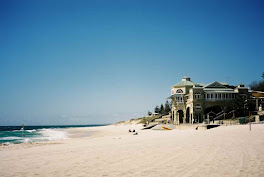
cottesloe beach restaurant
City of Perth
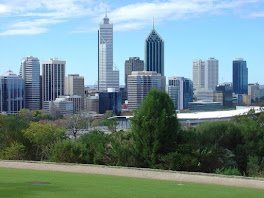
view from King's park
Houston TX
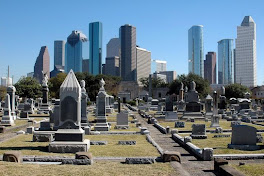
San antonio






